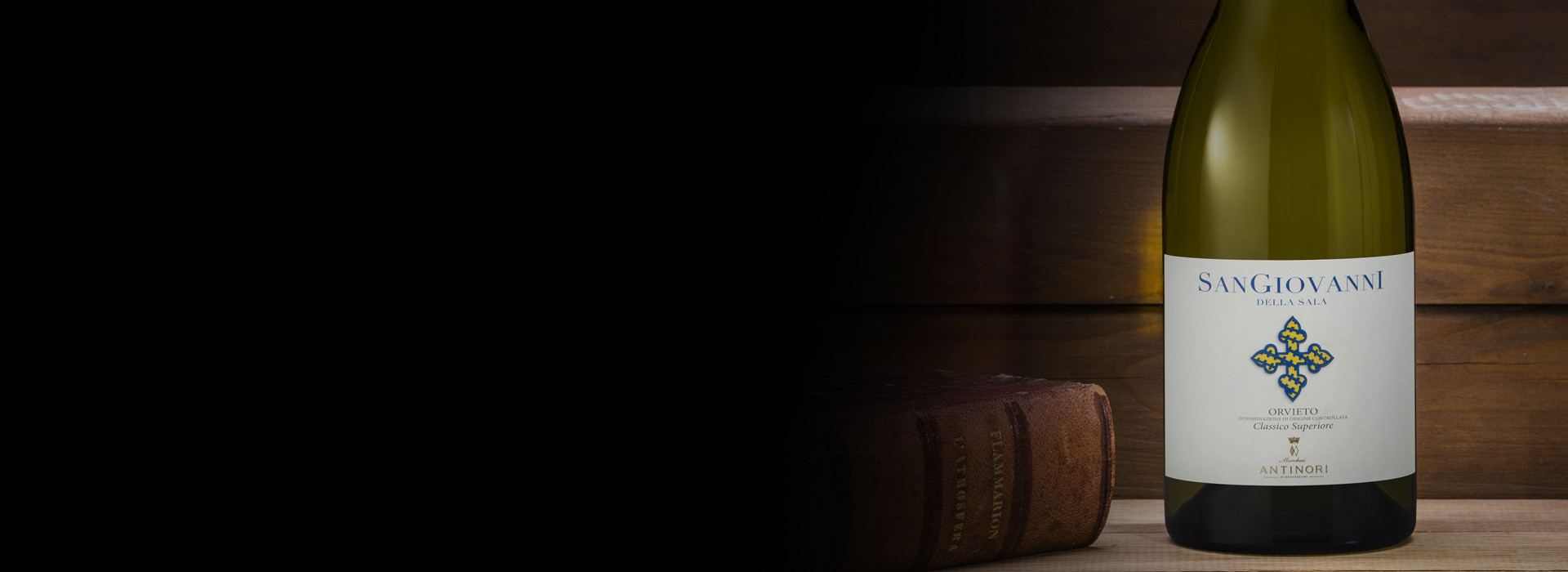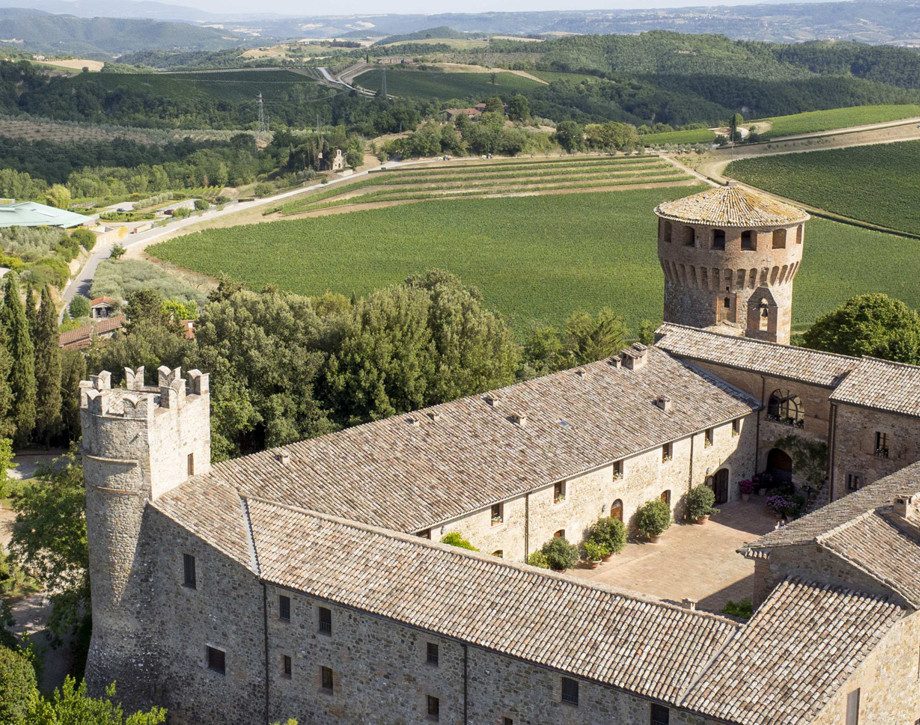San Giovanni Della Sala

Climate
The 2017 vintage was, in general, characterized by an absence of rainfall and by a winter with temperatures below normal seasonal averages. A late frost during the month of April caused a reduction of production, particularly in valley-floor vineyards. The hot and dry climate of the summer months assisted in the early ripening of the grapes and guaranteed a crop of excellent healthiness. Drip irrigation was employed in certain vineyards to avoid excessive stress on the plants. The important, although isolated, rainfall of late August was particularly useful in the achievement of good ripeness in the later-ripening varieties such as Procanico while conserving good freshness and fragrance as well. The constant, and customary, attention to the growth and development of the vines and grapes, along with careful and timely picking, assured the harvest of healthy grapes characterized by an excellent freshness, capable of producing a wine of much balance between acidity and alcohol. The picking of the Grechetto, the Viognier, and the Pinot Blanc for San Giovanni began towards the third week of August and concluded with the harvest of Procanico.
Vinification
The grapes, upon arriving in the cellars, were fermented separately, variety by variety, to fully bring out the characteristics of each different variety. Part of the must was given a cold maceration on its skins which lasted for approximately six hours at a temperature of 50° Fahrenheit (10° centigrade) before joining the part produced by a direct soft pressing of the crop. The resulting must then went into stainless steel fermenting tanks, where it fermented at a temperature held to a maximum of 61° Fahrenheit (16° centigrade). The wine remained on its fine lees for several months in order to increase its structure, elegance, and mineral character up until the moment in which the various slots were assembled and the bottling which followed.
Historical Data
San Giovanni is produced from the vineyards surrounding the medieval castle at Castello della Sala and is a blend of indigenous varieties, Grechetto, Procanico with Pinot Blanc and Viognier; a new interpretation of the Orvieto Classico appellation. The first vintage of Castello della Sala’s Orvieto Classico was 1990.
Tasting Notes
San Giovanni della Sala shows a light straw color with greenish highlights. On the notes, pleasurable notes of tropical fruit fuse with light mineral sensations. The palate is noteworthy for its balance between structure and freshness, a fine savory character, and an attractive persistence of flavors of yellow fruit.
Awards
Daniele Cernilli 90/100 IT Luca Maroni 90/100 IT

The Wine
San Giovanni comes from Castello della Sala’s vineyards and is made with a blend of Grechetto, Procanico, Pinot Bianco and Viognier, a contemporary representation of Orvieto Classico.

Climate
The 2017 vintage was, in general, characterized by an absence of rainfall and by a winter with temperatures below normal seasonal averages. A late frost during the month of April caused a reduction of production, particularly in valley-floor vineyards. The hot and dry climate of the summer months assisted in the early ripening of the grapes and guaranteed a crop of excellent healthiness. Drip irrigation was employed in certain vineyards to avoid excessive stress on the plants. The important, although isolated, rainfall of late August was particularly useful in the achievement of good ripeness in the later-ripening varieties such as Procanico while conserving good freshness and fragrance as well. The constant, and customary, attention to the growth and development of the vines and grapes, along with careful and timely picking, assured the harvest of healthy grapes characterized by an excellent freshness, capable of producing a wine of much balance between acidity and alcohol. The picking of the Grechetto, the Viognier, and the Pinot Blanc for San Giovanni began towards the third week of August and concluded with the harvest of Procanico.
Vinification
The grapes, upon arriving in the cellars, were fermented separately, variety by variety, to fully bring out the characteristics of each different variety. Part of the must was given a cold maceration on its skins which lasted for approximately six hours at a temperature of 50° Fahrenheit (10° centigrade) before joining the part produced by a direct soft pressing of the crop. The resulting must then went into stainless steel fermenting tanks, where it fermented at a temperature held to a maximum of 61° Fahrenheit (16° centigrade). The wine remained on its fine lees for several months in order to increase its structure, elegance, and mineral character up until the moment in which the various slots were assembled and the bottling which followed.
Historical Data
San Giovanni is produced from the vineyards surrounding the medieval castle at Castello della Sala and is a blend of indigenous varieties, Grechetto, Procanico with Pinot Blanc and Viognier; a new interpretation of the Orvieto Classico appellation. The first vintage of Castello della Sala’s Orvieto Classico was 1990.
Tasting Notes
San Giovanni della Sala shows a light straw color with greenish highlights. On the notes, pleasurable notes of tropical fruit fuse with light mineral sensations. The palate is noteworthy for its balance between structure and freshness, a fine savory character, and an attractive persistence of flavors of yellow fruit.
Awards
Daniele Cernilli 90/100 IT Luca Maroni 90/100 IT

Castello della Sala
Castello della Sala is located in the Umbria region, not far from the Tuscan border, about 18 kilometers from the historic city of Orvieto. The Medieval castle’s property extends over an area of 600 hectares (1482 acres), 200 hectares (495 acres) are planted with vineyards at an altitude that varies between 220 and 470 meters above sea level (722/1541 feet) on the gently rolling hillsides that characterize the beautiful countryside in this area. Castello della Sala is the perfect place for growing white varieties. The vines grow in clay and calcareous based soils, rich in fossil shells, and they are well exposed to the rising of the sun with an excellent difference of temperature between day and night. The one exception to the rule is Pinot Noir, the only red variety that has found in this area ideal growing conditions to best express its full potential.

Soil
Soils originating from sedimentary deposits of marine fossils with veins of clay.
















